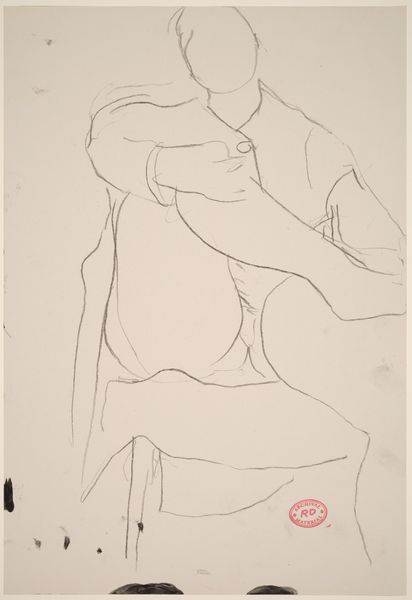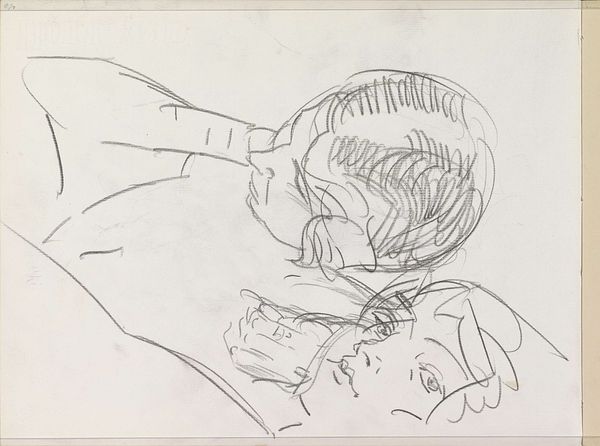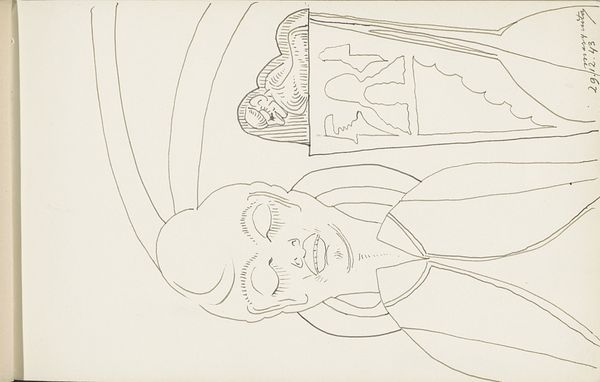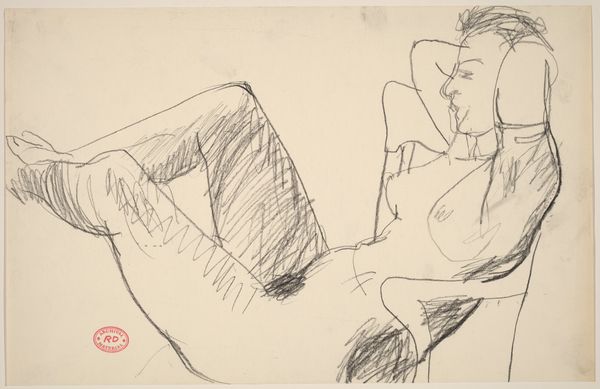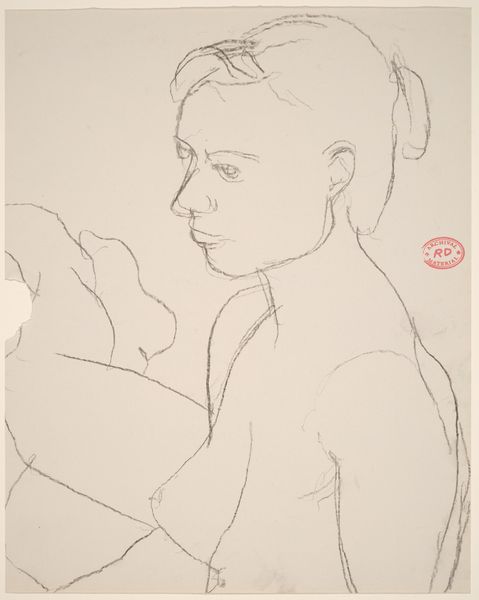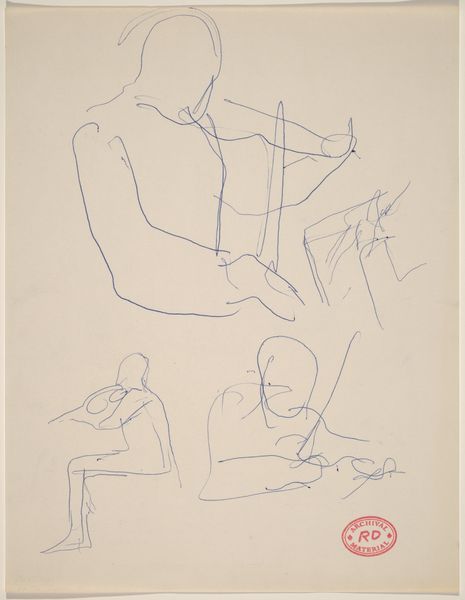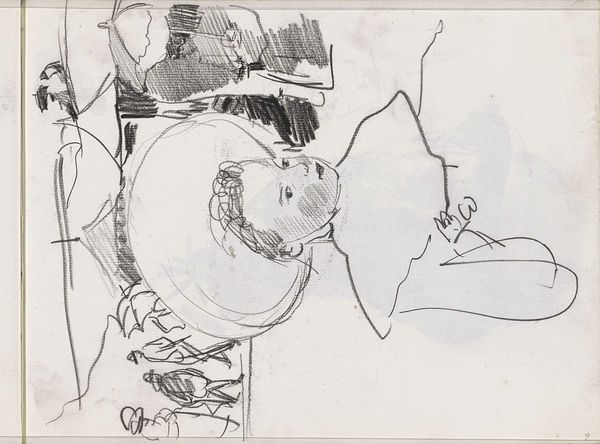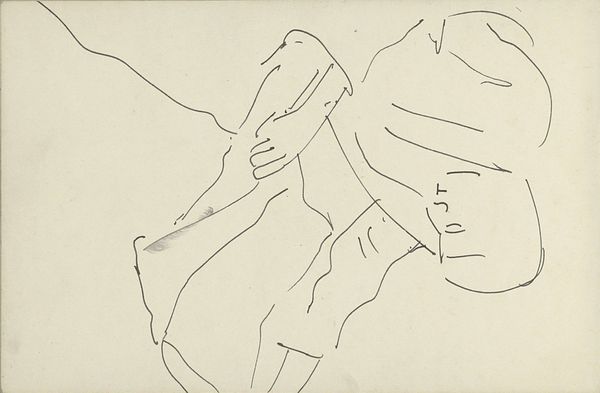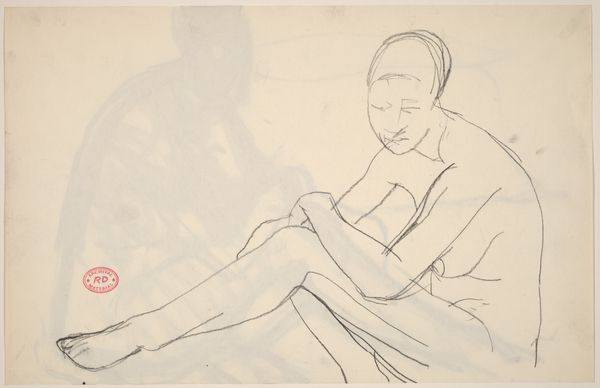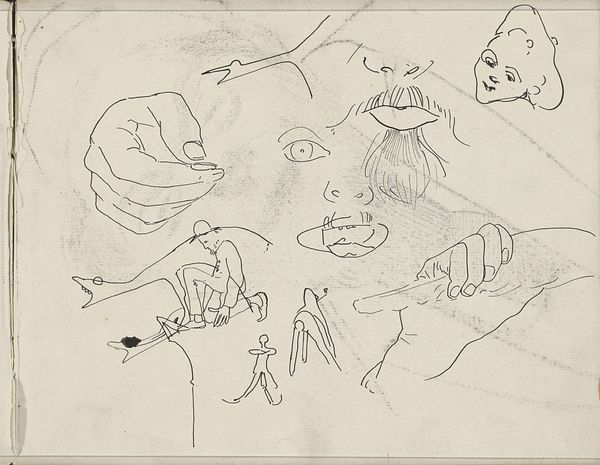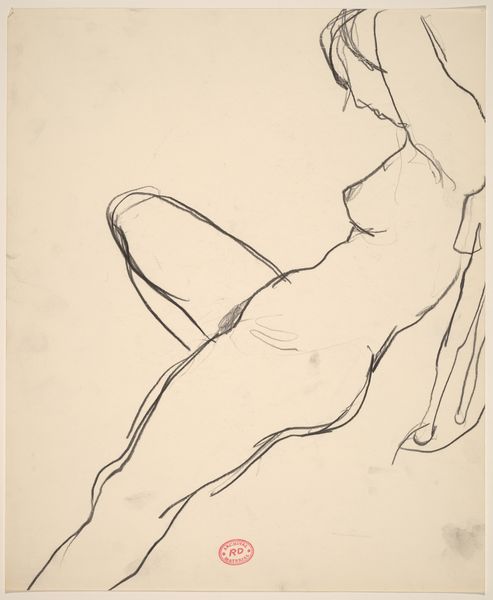![Untitled [woman reclining with knees in air and reading book] by Richard Diebenkorn](/_next/image?url=https%3A%2F%2Fd2w8kbdekdi1gv.cloudfront.net%2FeyJidWNrZXQiOiAiYXJ0ZXJhLWltYWdlcy1idWNrZXQiLCAia2V5IjogImFydHdvcmtzL2I3OGJhOGZiLTVlY2UtNGMyYS1iYzFkLWE4OTBlMWVjNGY2YS9iNzhiYThmYi01ZWNlLTRjMmEtYmMxZC1hODkwZTFlYzRmNmFfZnVsbC5qcGciLCAiZWRpdHMiOiB7InJlc2l6ZSI6IHsid2lkdGgiOiAxOTIwLCAiaGVpZ2h0IjogMTkyMCwgImZpdCI6ICJpbnNpZGUifX19&w=3840&q=75)
Untitled [woman reclining with knees in air and reading book] 1955 - 1967
0:00
0:00
drawing, pencil
#
drawing
#
pencil sketch
#
figuration
#
bay-area-figurative-movement
#
pencil
#
portrait drawing
#
modernism
Dimensions: overall: 21.6 x 27.9 cm (8 1/2 x 11 in.)
Copyright: National Gallery of Art: CC0 1.0
Curator: This is an untitled drawing by Richard Diebenkorn, created sometime between 1955 and 1967. It depicts a woman reclining, her knees raised, seemingly engrossed in a book. The medium is simple: pencil on paper. Editor: It’s strikingly intimate, isn’t it? The loose, almost gestural lines create a sense of immediacy, as if we're catching a private moment of contemplation. There is also a certain vulnerability about the way her face is rendered. Curator: I think Diebenkorn's broader body of work is relevant. His work during this period explored domestic scenes, but he was doing that in the shadow of abstract expressionism which certainly elevates even what might seem ordinary. How does his approach, and how would that speak to women's issues at this time? Editor: I think situating it within the context of abstract expressionism is helpful; however, it can run the risk of obscuring its exploration of women's identity. After all, figuration can be interpreted as its own statement, distinct from the dominant abstract style. To that end, a drawing of a woman relaxing, perhaps defying traditional societal roles assigned to her, has a political nuance worth emphasizing, no? Curator: Perhaps, but I see this as participating in the broader development of modernist ideas about women. By making this woman reading at its core, rather than commenting on a specific politic or stance of women, I would argue the artist is exploring new concepts and positions on them. So in the grand scheme of history and in museums, one should consider its ties to other "sleeping" nudes or other figurative, feminine studies during the time period. Editor: I suppose it boils down to perspective then. Viewing the image as a straightforward drawing that emphasizes style overlooks the cultural context. Instead of just form, what does the intimate moment communicate in regards to the construction of the feminine? To ignore this question dismisses critical engagement of art history with intersectionality, as you might say. Curator: Well said. Art offers these open questions and interpretations, it's wonderful to continue thinking critically about works like this today. Editor: Precisely. Each engagement peels away yet another layer of understanding, even years after its creation.
Comments
No comments
Be the first to comment and join the conversation on the ultimate creative platform.
